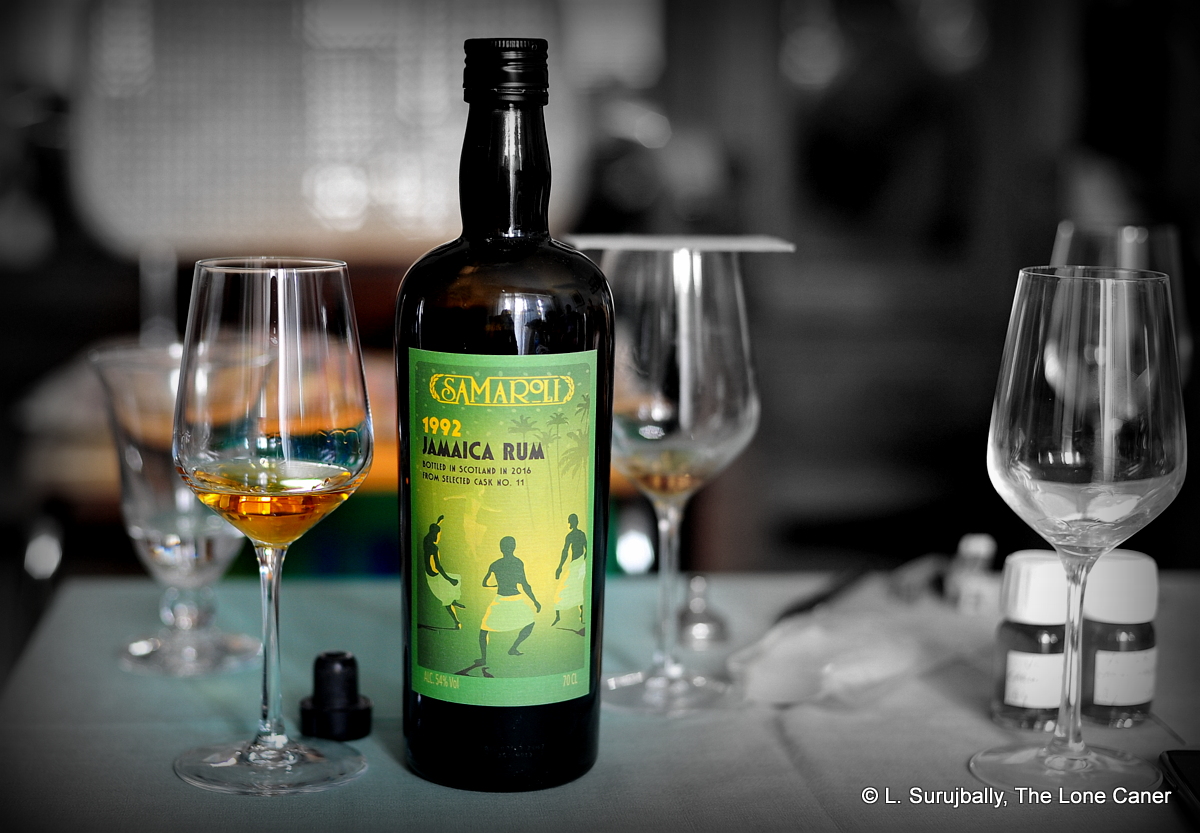It’s unclear to me what Moon Import thought it was doing back in 2004 when they blended this rum. They had done blends before, something of a departure from other Italian independents who since the 1970s had thought to bootstrap their expertise with single cask whisky selections into commensurate skill with single cask rums … but few except maybe Rum Nation (which was formed nearly two decades after Moon Import) took blends seriously.
Even when released as such, for the most part rums made that way tended to be multiple barrels of a single distillery, usually a particular year and age, so that more bottles of something exceptional could be wrung out. Moon, while certainly adhering to that philosophy when it suited them, also played around with blends more than most, particularly with Jamaican rums and here they mixed up stock from four different distilleries: Innswood, Long Pond, New Yarmouth and Monymusk, from what were undoubtedly barrels aged in Scotland. One wonders how come Hampden and Worthy Park were not considered for inclusion…perhaps they were too aggressive and didn’t play nice.
For originality at least, kudos to Moon – at that time the various operating distilleries in Jamaica were not very well known, so to take these four and combine them took some courage — to mention them individually at all was unheard of. Too bad they ballsed it up on the labelling – they spelled the name wrong on one of them, then added insult to injury by calling it a “Rhum Agricole”, just as they did with the Demerara 1974 released the same year. They mentioned which bottle in the series it was…but not the total outturn. Moreover, they noted year of production (1982) and year of bottling (2004)…then said there was a 25 year old hiding in one of them. Clearly quality control and fact checking were unfunded areas of endeavour in the labelling department back in the day.
But that aside, the rum had its points that its shoddy labelling could not entirely hide. Bottled at the 46% commonly used by small independents at that time, it smelled of wax and sugar water plus a bit of unsweetened yoghurt, and stoned fleshy fruits like cherries and peaches just starting to go off a little. It presented like “Jamaica lite”, a sort of gently funked-up rum which today would be thought of as “meh” but back then was probably considered scandalous. I liked it, not least because that nose really took its time coming out and even a quarter hour later I was writing down things like “old paper”, “sweet and dry” and noted how the light clarity of green apples and citrus combined nicely with the softer aromas.
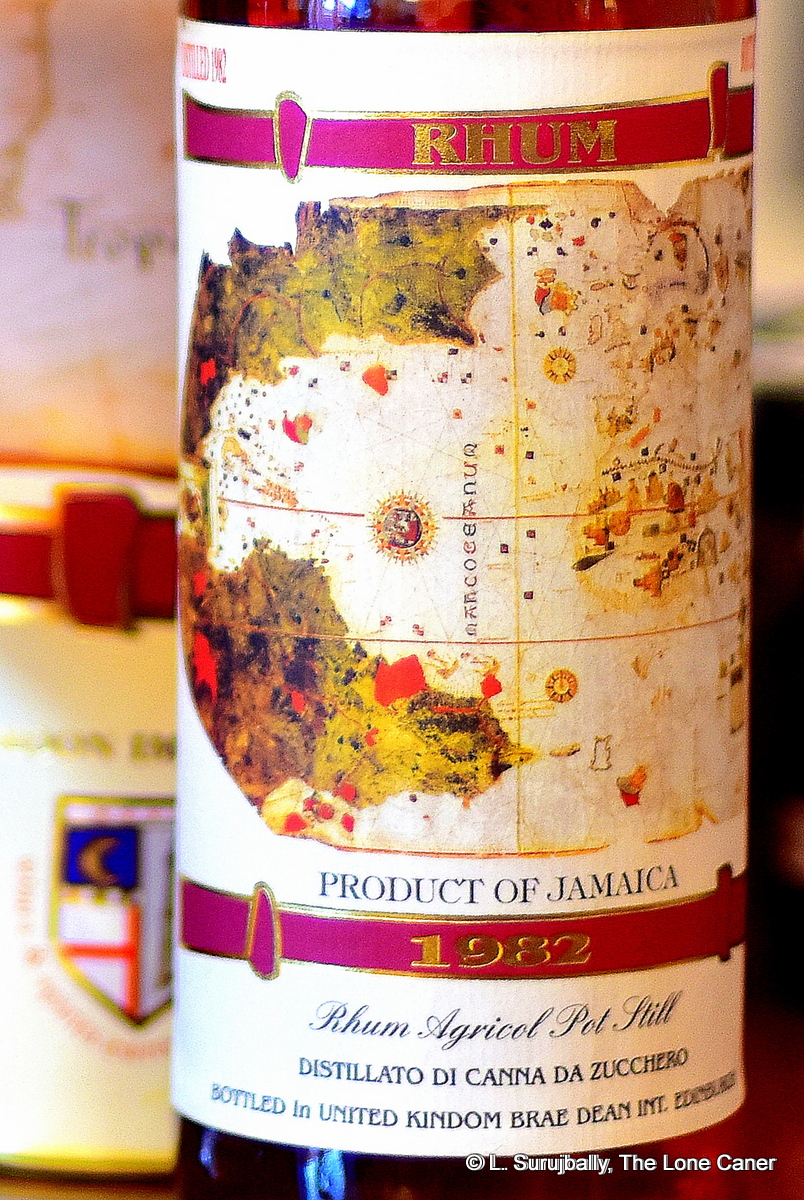 Tastewise, I would have to say it was somewhat indeterminate: it was hardly Jamaican at all by this point. Oh the flavours were there: the questions is, what were they? The rum was dry, almost astringent, and presented tastes of faint, dry smoky spices like masala, paprika and tumeric. There was some fruity ruminess – raisins, figs, dates, caramel, vanilla, and cinnamon, and yes, there were fruits hiding behind those, but it was curiously difficult to come to grips with them because they kept ducking and bobbing and weaving. Still: fruits, florals, black tea, spices, and a nice cleanliness ot the experience. It all wrapped up in a finish that carved its way down with firm clarity, leaving behind memories of vanilla, nuts, light caramel, raisins, aromatic tobacco and peaches.
Tastewise, I would have to say it was somewhat indeterminate: it was hardly Jamaican at all by this point. Oh the flavours were there: the questions is, what were they? The rum was dry, almost astringent, and presented tastes of faint, dry smoky spices like masala, paprika and tumeric. There was some fruity ruminess – raisins, figs, dates, caramel, vanilla, and cinnamon, and yes, there were fruits hiding behind those, but it was curiously difficult to come to grips with them because they kept ducking and bobbing and weaving. Still: fruits, florals, black tea, spices, and a nice cleanliness ot the experience. It all wrapped up in a finish that carved its way down with firm clarity, leaving behind memories of vanilla, nuts, light caramel, raisins, aromatic tobacco and peaches.
So what to say about the rum? Well, it was a good drink and a tasty dram. It was nice and complex, good nose, excellent palate, worked well as a sipping rum — after twenty plus years of ageing the rough edges had been gently sanded down to smoothness. I liked it, and I think you would too, in spite of its mild I’m-not-sure-I’m-a-Jamaican character.
The combination worked, and the four distilleries made for an interesting blend. I’m just left with a nagging sense of incompleteness, as if there was more in there we were missing. Bottling each distillery’s rum as a quartet might have done more to highlight their qualities than mixing them all together and forcing them to give up their individuality in the soft merging of variant profiles. It is to Pepi Mongiardino’s credit that he made a rum that skated past such concerns and came out the other end as a product worth getting. And so, while it does Jamaica no dishonour at all, I think you’ll also find that it inflames rather more desires than it quenches.
(#850)(84/100)
Other Notes
- Bottle #218 (total outturn unknown)
- The bottle says “pot still” but I’m ignoring that in my tagging
- Translation of back label:“This exceptional Jamaican Rhum is part of two different bottles blended from four different distilleries: Innerwood, Yarmouth, Monymusk and Long Pond, aged in Scotland for 20 and 25 years.The two barrels could have been assembled but to keep the meticulous difference we preferred to keep them distinct.
It will be interesting for amateurs to test themselves in tasting the two different vintages.
Presents a bouquet of nutmeg, cinnamon, hay, yellow fruits such as apricot, banana and peach smoothed and ripe, and a final of chilli. On the palate it results in licorice wood at the entrance, with honey, cedar, ginger and dry banana.
Exceptional cleaning and drying of the palate.”
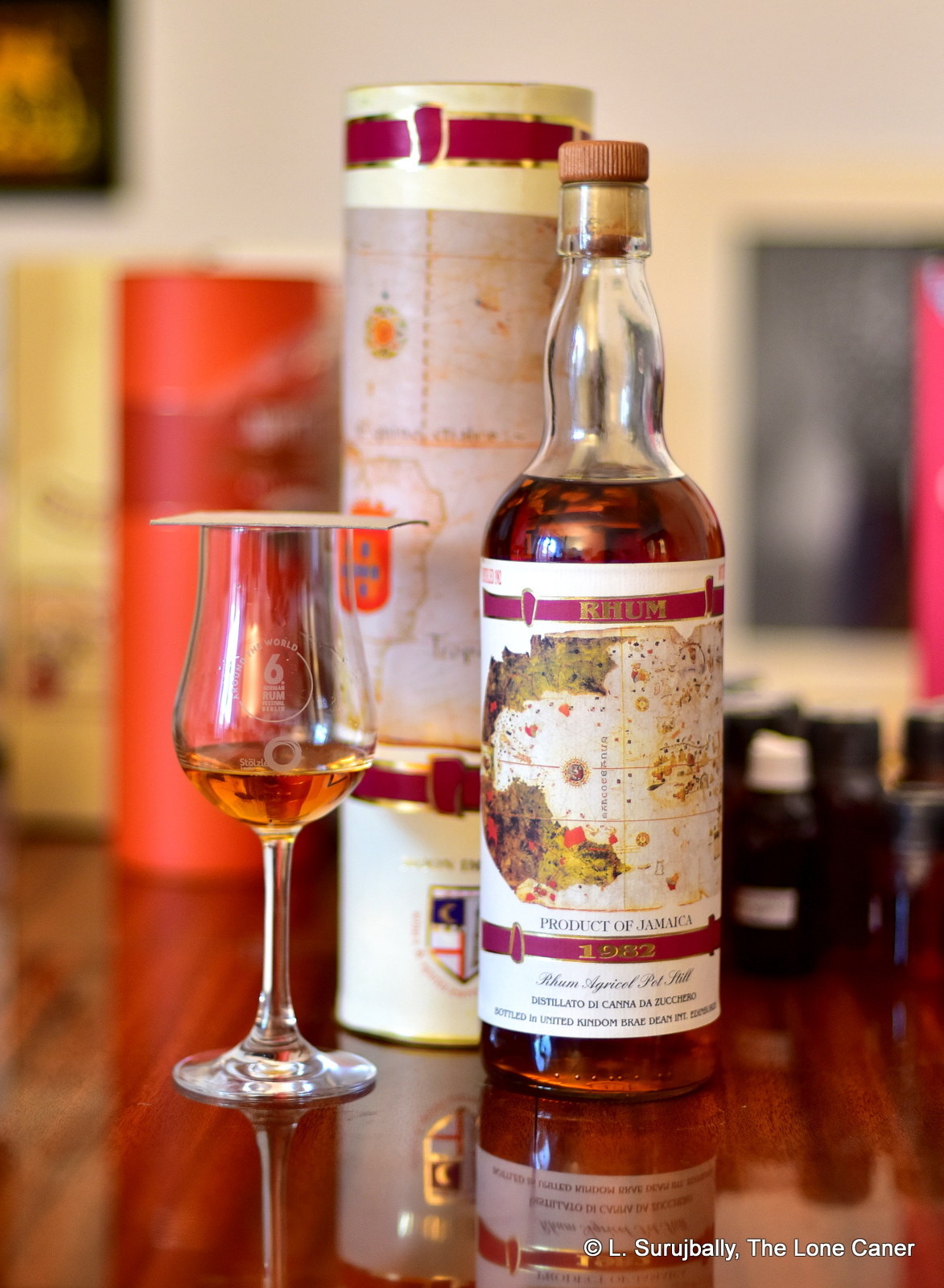
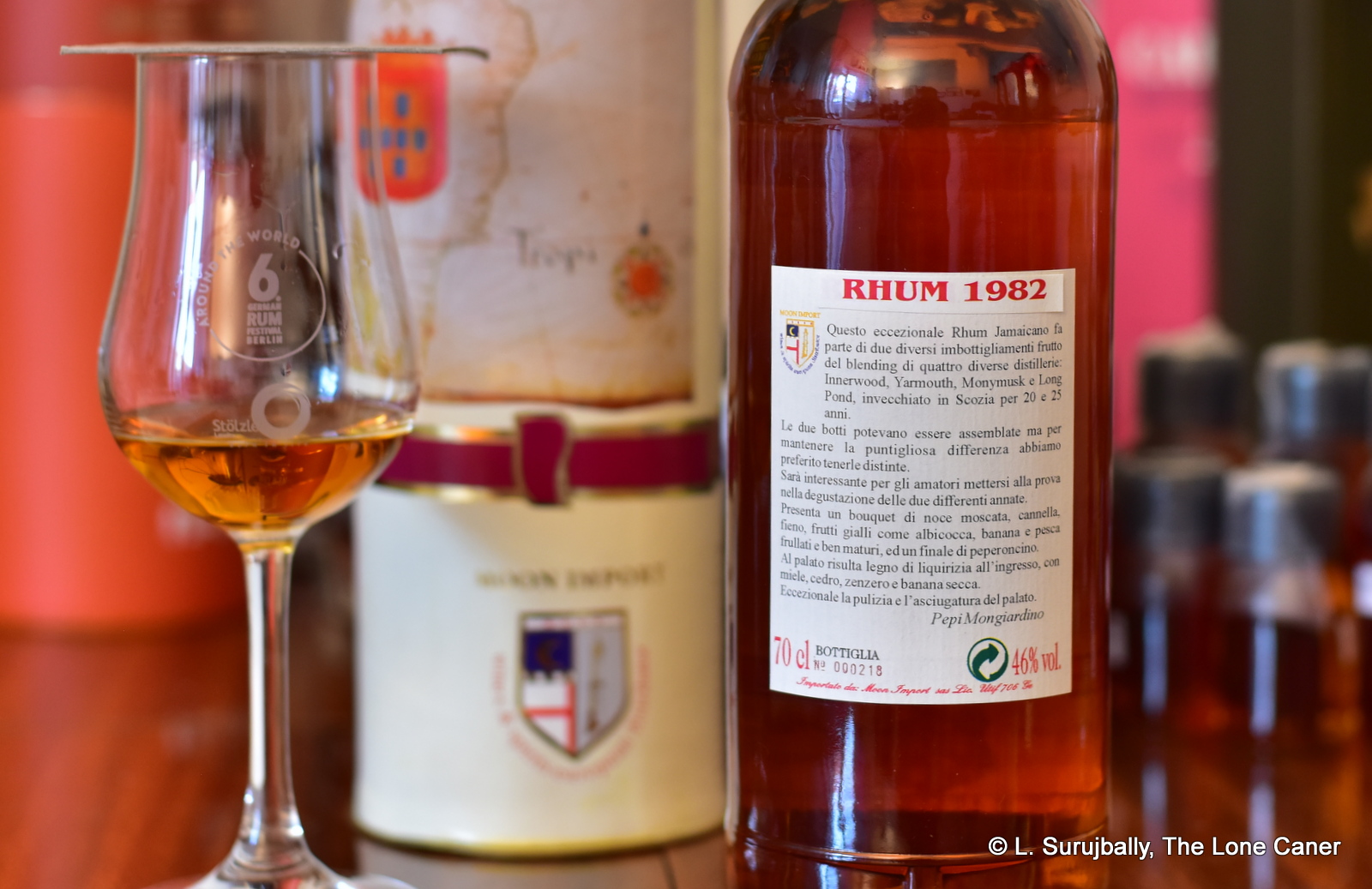
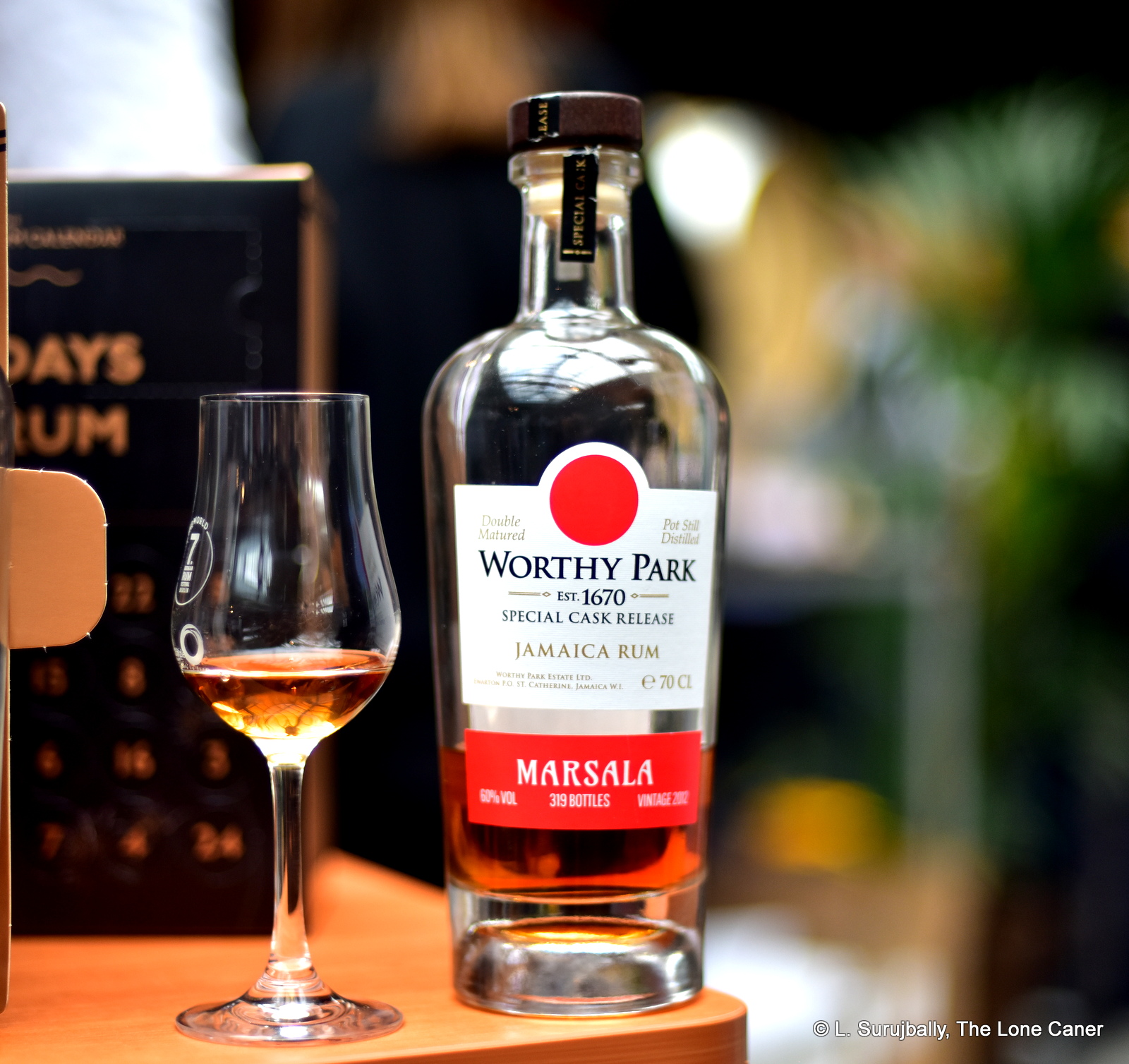
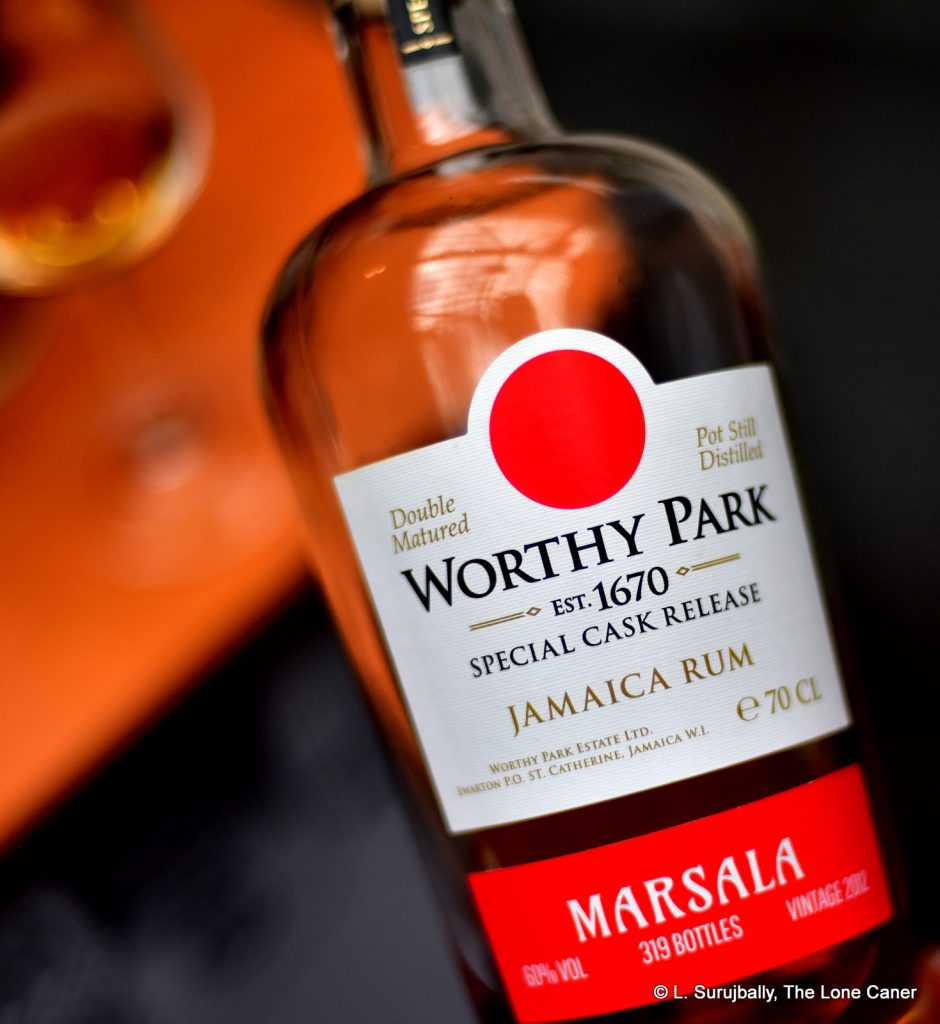
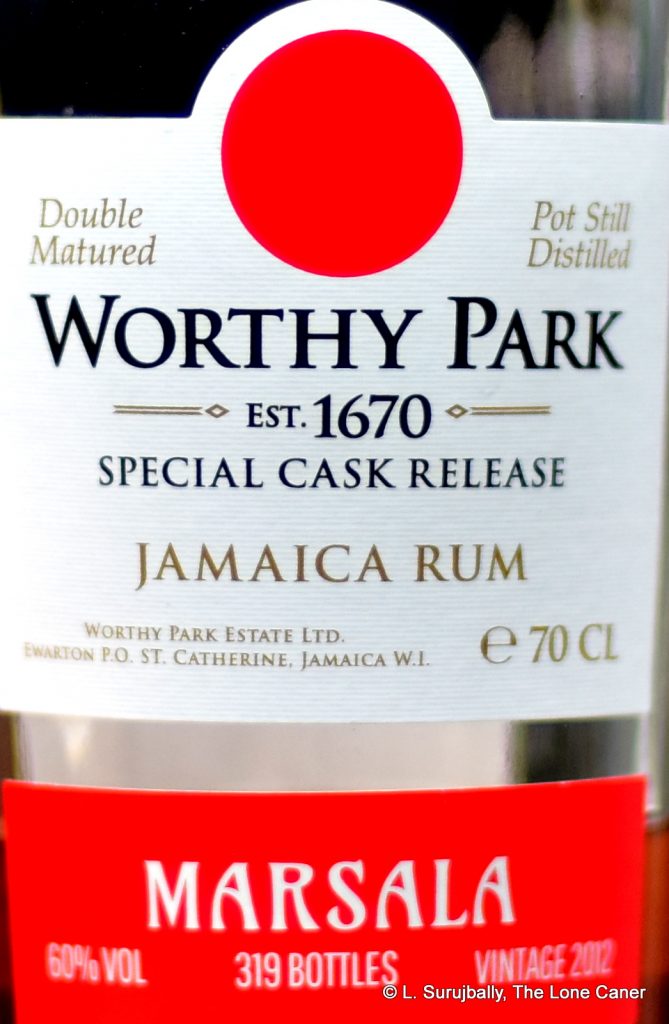
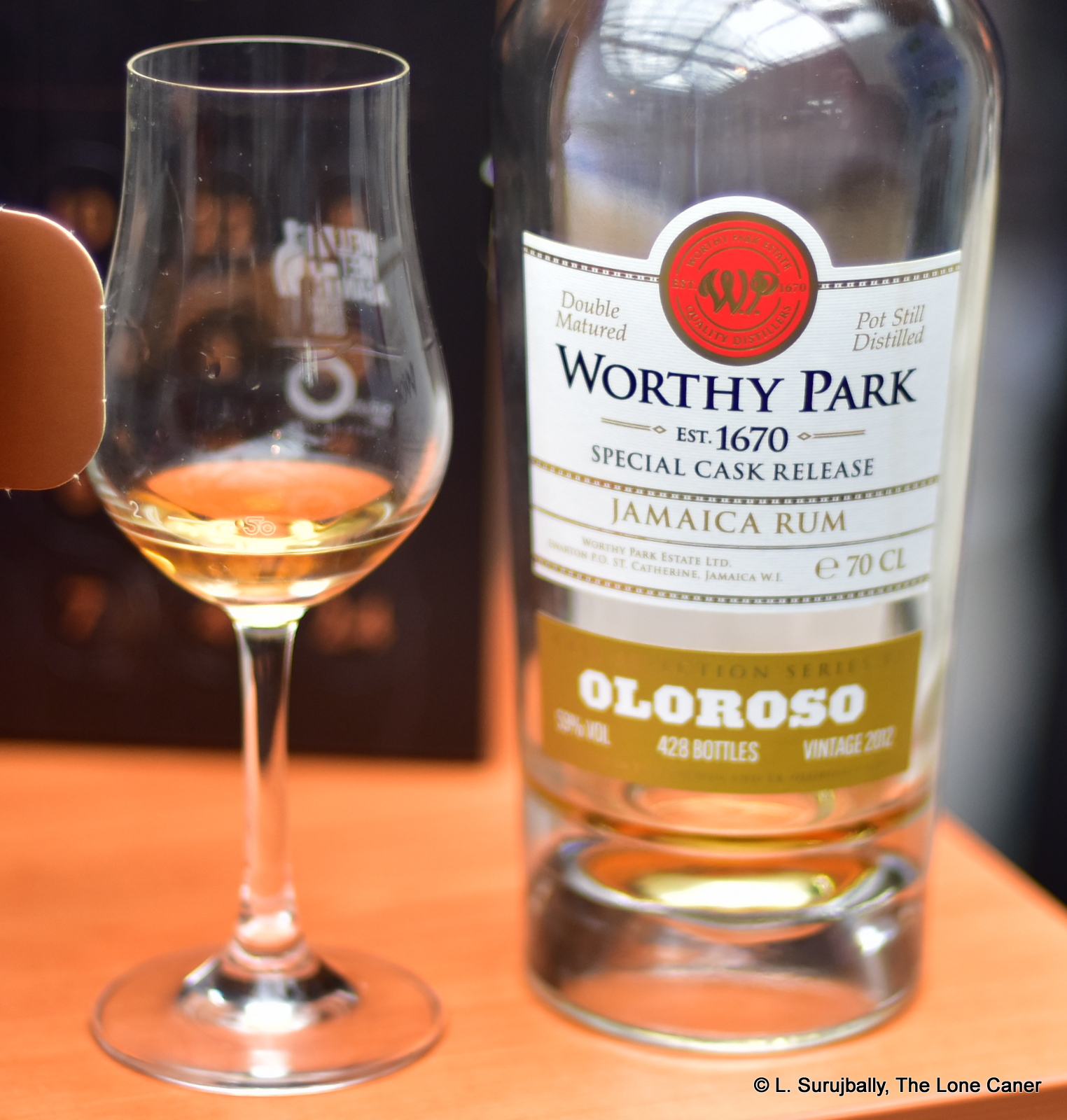
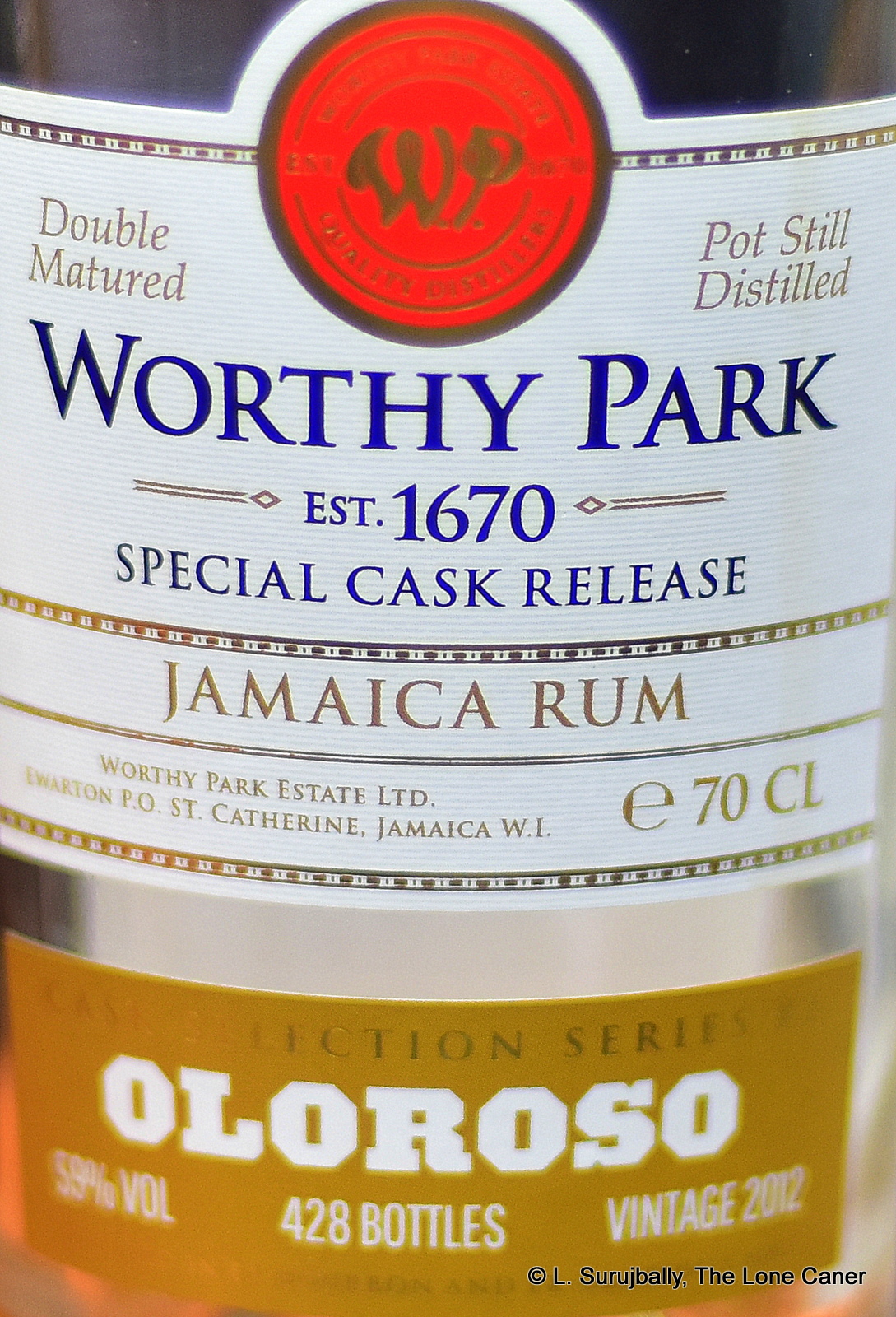
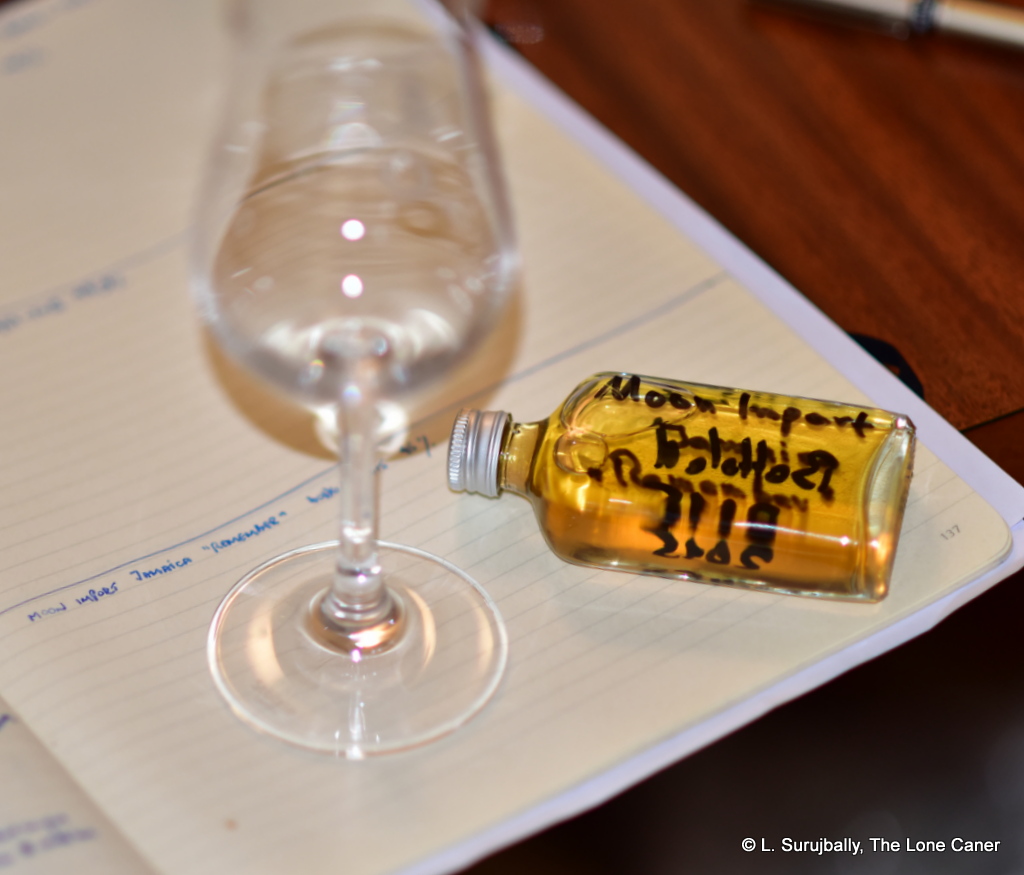
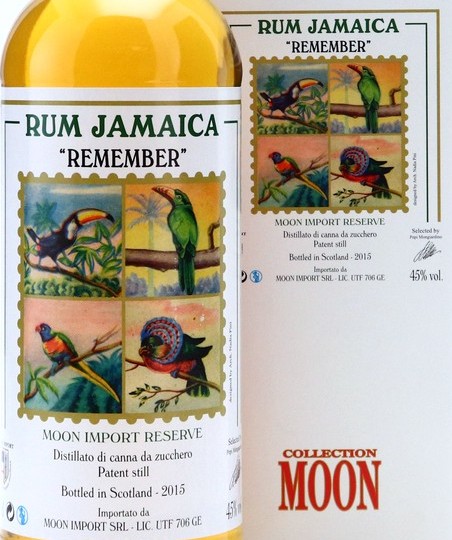
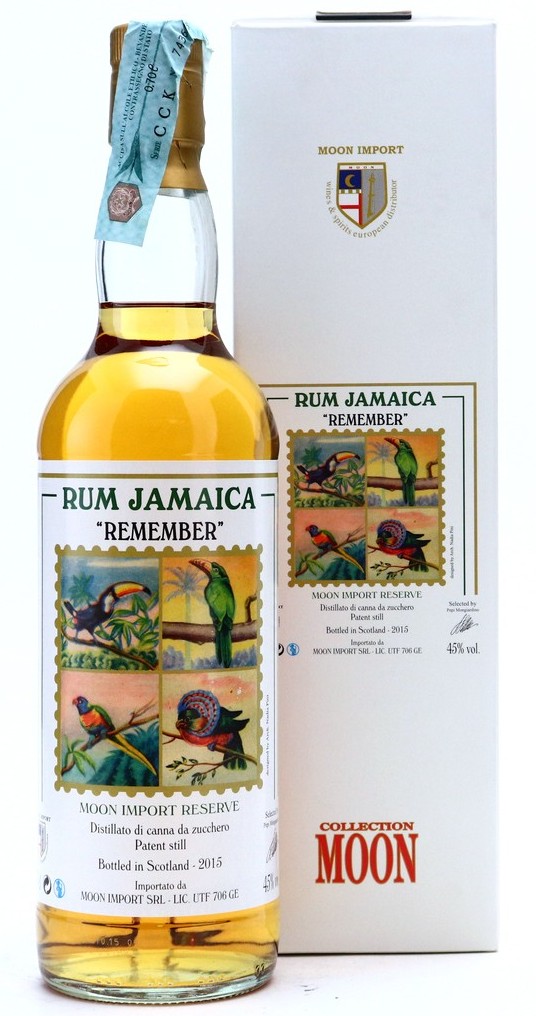

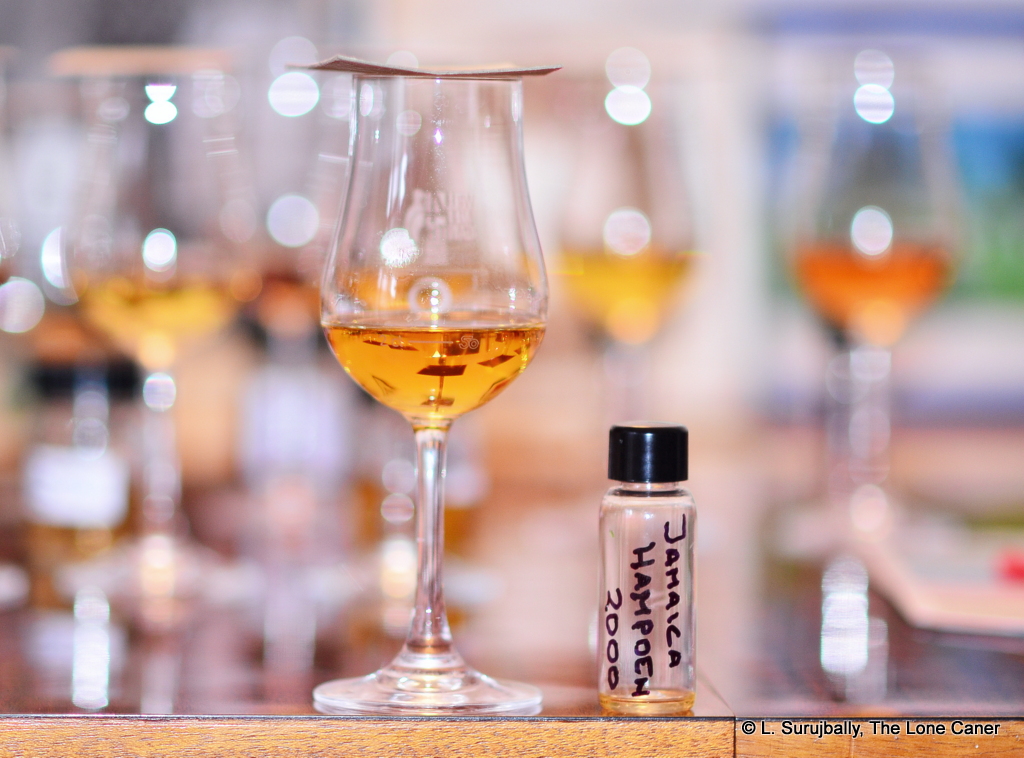
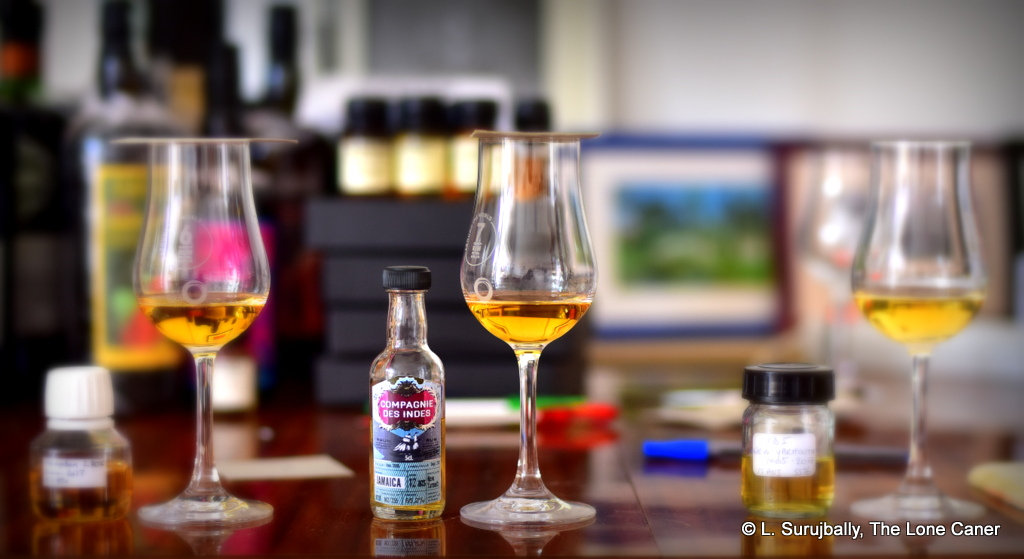
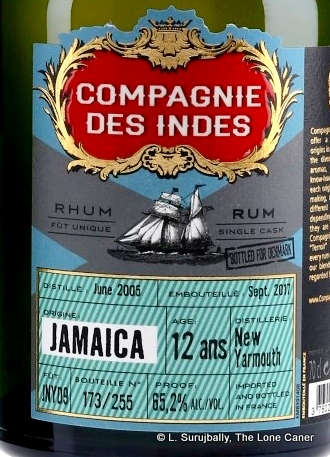 And what a rum it was. I don’t know what ester levels it had, but my first note was “a lot!”. I mean, it was massive. Pencil shavings and glue. Lots of it. Musky, dry, cardboard and damp sawdust. Some rotting fruit (was that dunder they were using?) and also rubber and furniture polish slapped on enough uncured greenheart to rebuild the Parika stelling, twice. The fruitiness – sharp! – of tart apples, green grapes, passion fruit, overripe oranges and freshly peeled tangerines. Florals and crisp light notes, all of it so pungent and bursting that a little breeze through your house and the neighbors would either be calling for a HAZMAT team or the nearest distillery to find out if they had lost their master blender and a still or two.
And what a rum it was. I don’t know what ester levels it had, but my first note was “a lot!”. I mean, it was massive. Pencil shavings and glue. Lots of it. Musky, dry, cardboard and damp sawdust. Some rotting fruit (was that dunder they were using?) and also rubber and furniture polish slapped on enough uncured greenheart to rebuild the Parika stelling, twice. The fruitiness – sharp! – of tart apples, green grapes, passion fruit, overripe oranges and freshly peeled tangerines. Florals and crisp light notes, all of it so pungent and bursting that a little breeze through your house and the neighbors would either be calling for a HAZMAT team or the nearest distillery to find out if they had lost their master blender and a still or two.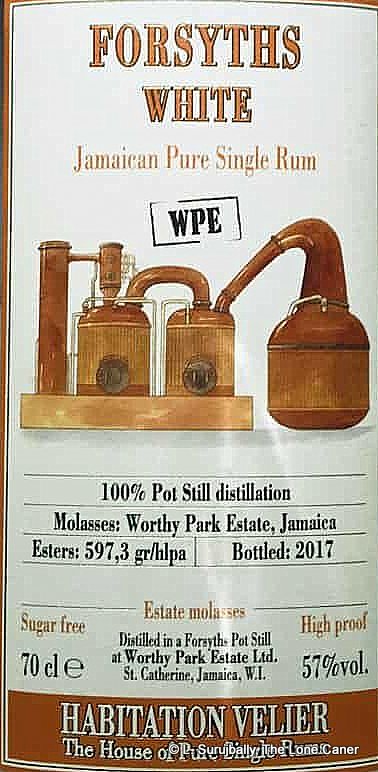 Hampden gets so many kudos these days from its relationship with
Hampden gets so many kudos these days from its relationship with 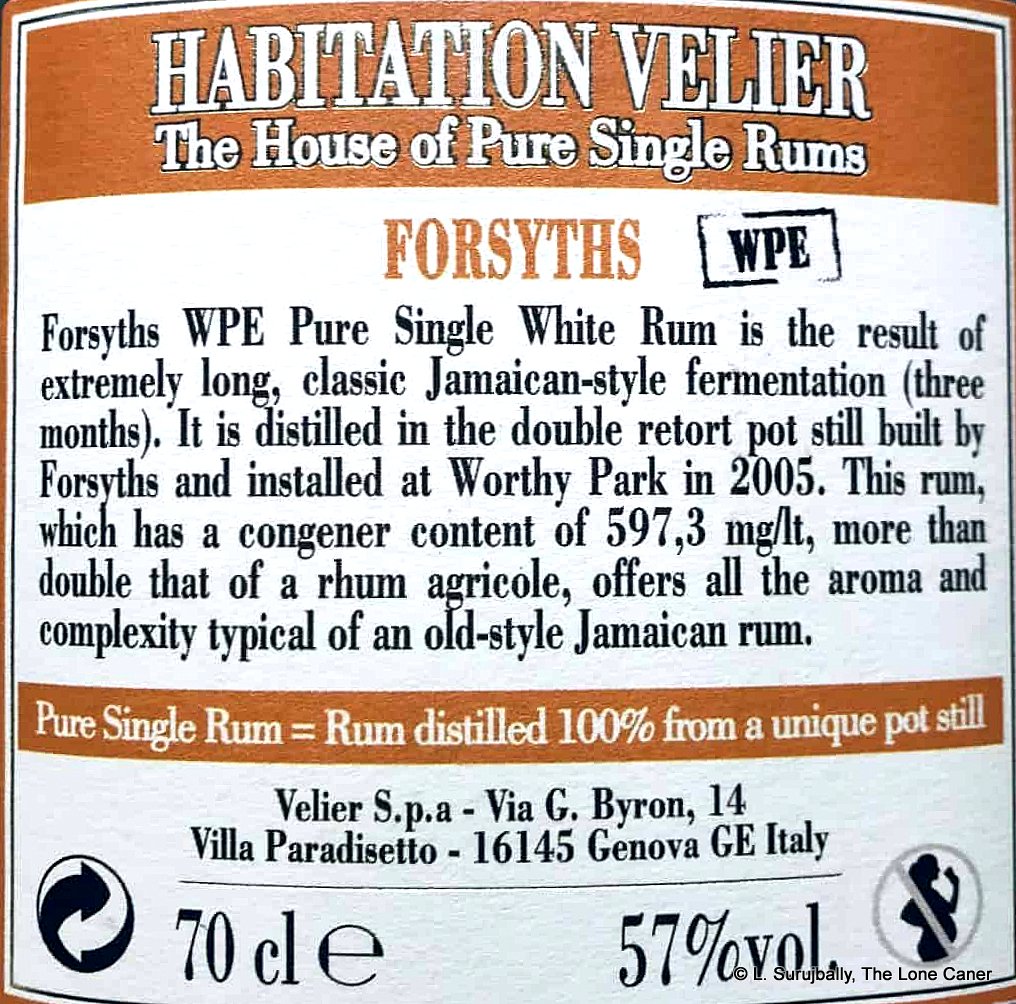 The rum displays all the attributes that made the estate’s name after 2016 when they started supplying their rums to others and began bottling their own. It’s a rum that’s astonishingly stuffed with tastes from all over the map, not always in harmony but in a sort of cheerful screaming chaos that shouldn’t work…except that it does. More sensory impressions are expended here than in any rum of recent memory (and I remember
The rum displays all the attributes that made the estate’s name after 2016 when they started supplying their rums to others and began bottling their own. It’s a rum that’s astonishingly stuffed with tastes from all over the map, not always in harmony but in a sort of cheerful screaming chaos that shouldn’t work…except that it does. More sensory impressions are expended here than in any rum of recent memory (and I remember 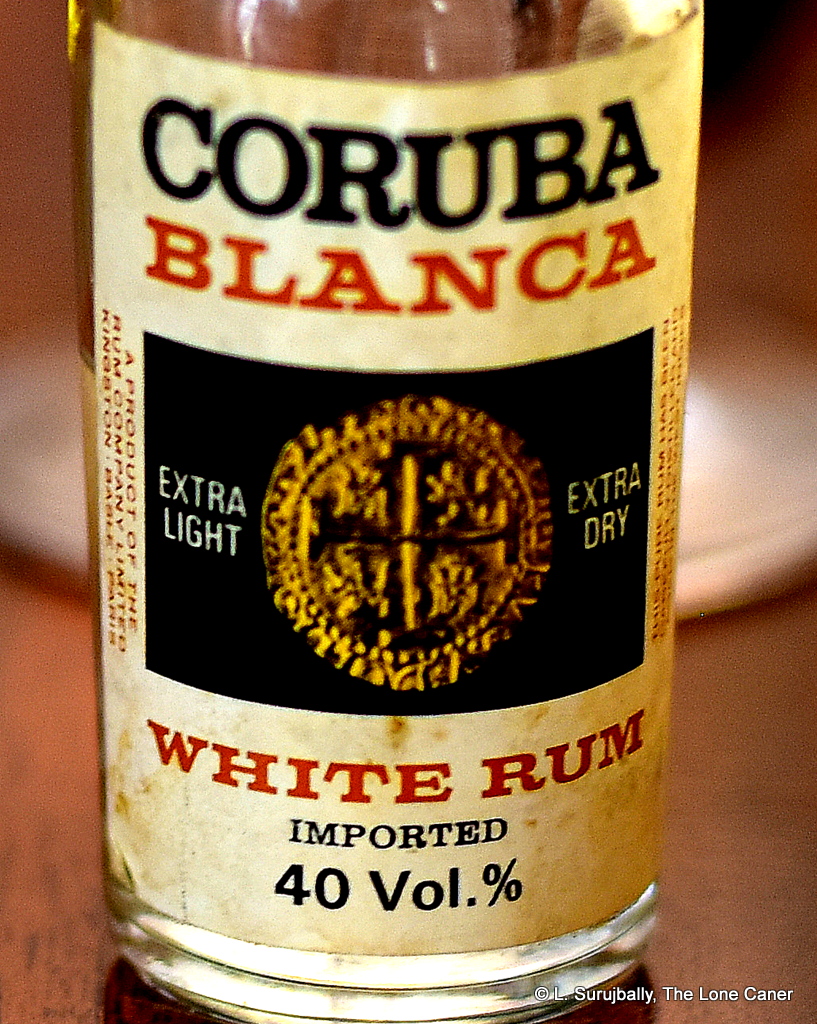 Rumaniacs Review #122 | 0785
Rumaniacs Review #122 | 0785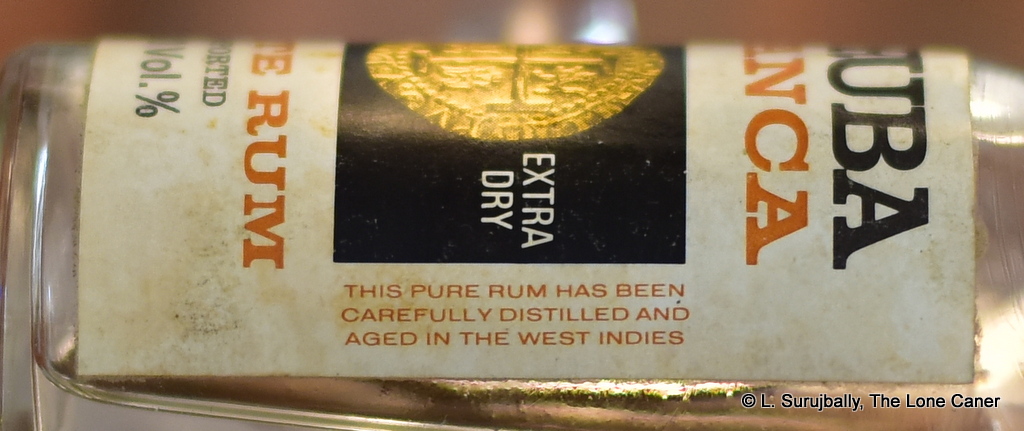
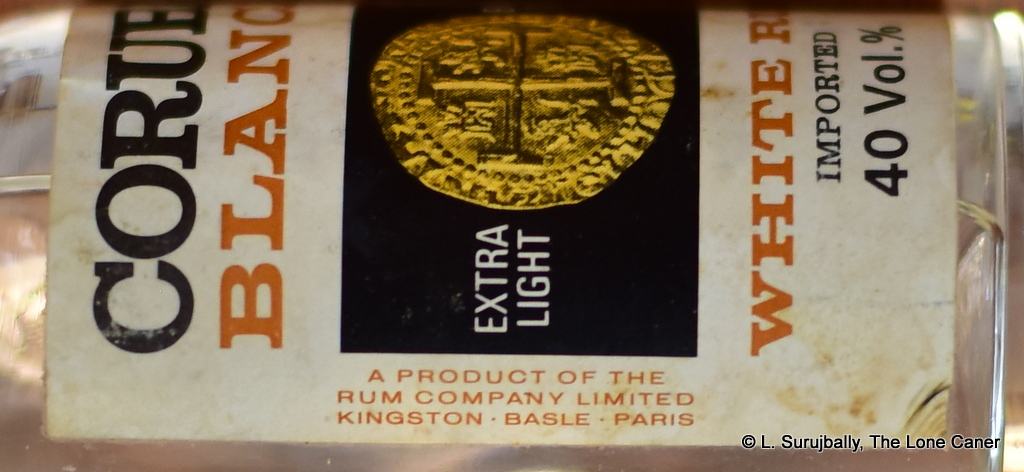
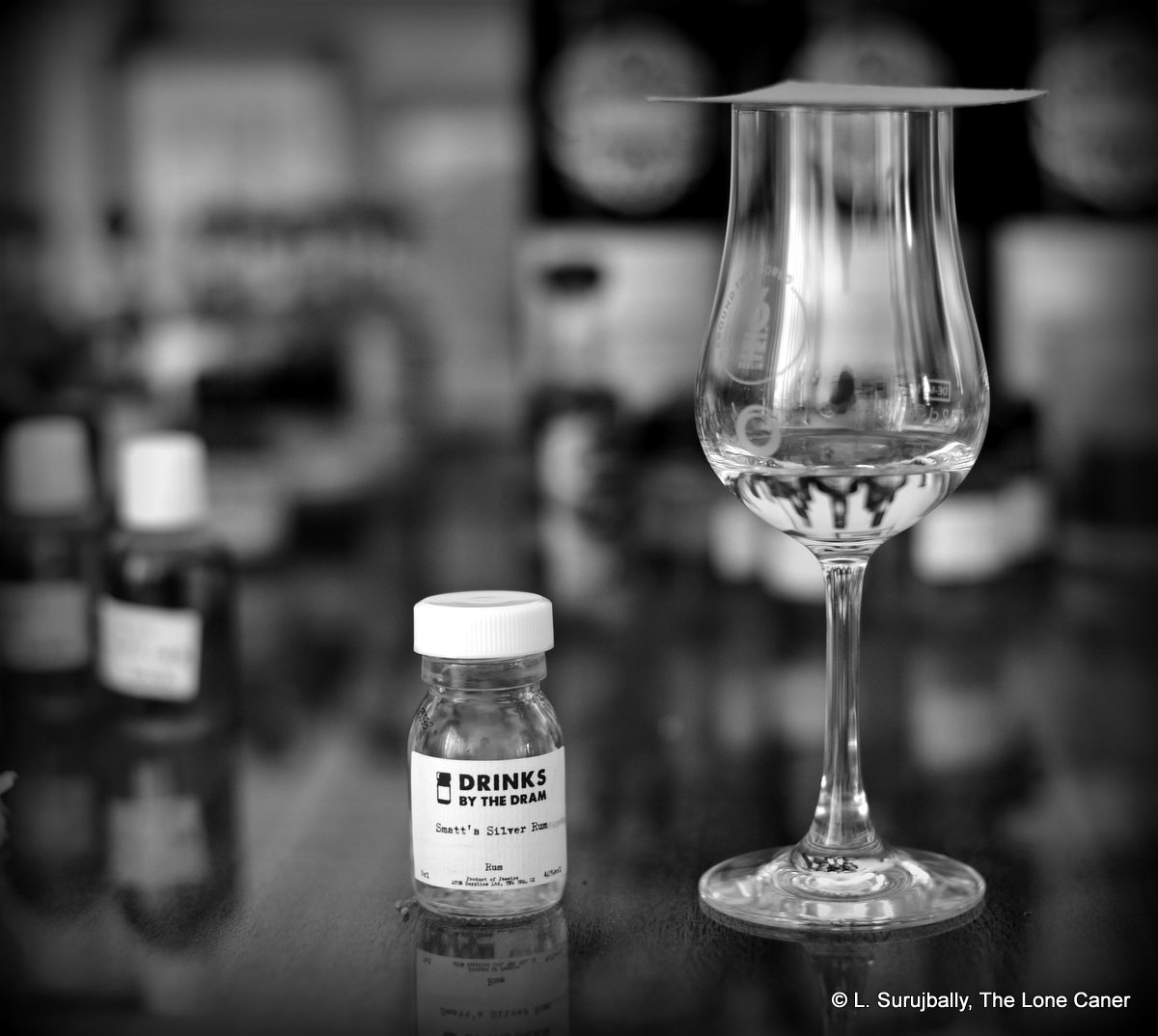
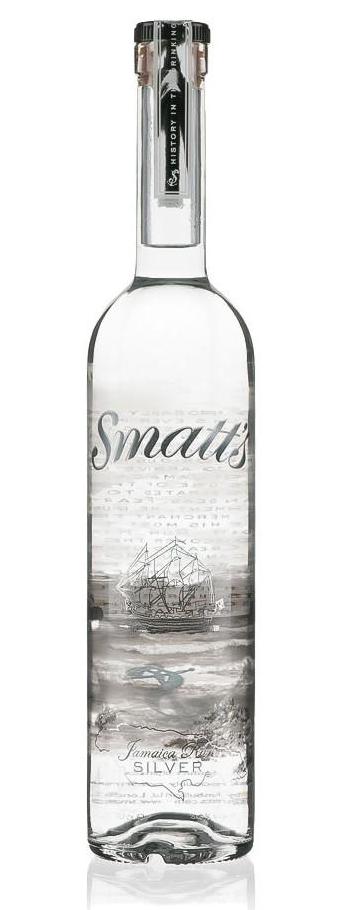 Normally, such a rum wouldn’t interest me much, but with the massive reputations the New Jamaicans have been building for themselves, it made me curious so I grudgingly parted with some coin to get a sample. That was the right decision, because this thing turned out to be less an undiscovered steal than a low-rent Jamaican wannabe for those who don’t care about and can’t tell one Jamaican rum from another, know Appleton and stop there. The rum takes great care not to go beyond such vanilla illusions, since originality is not its forte and it takes inoffensive pleasing-the-sipper as its highest goal.
Normally, such a rum wouldn’t interest me much, but with the massive reputations the New Jamaicans have been building for themselves, it made me curious so I grudgingly parted with some coin to get a sample. That was the right decision, because this thing turned out to be less an undiscovered steal than a low-rent Jamaican wannabe for those who don’t care about and can’t tell one Jamaican rum from another, know Appleton and stop there. The rum takes great care not to go beyond such vanilla illusions, since originality is not its forte and it takes inoffensive pleasing-the-sipper as its highest goal. 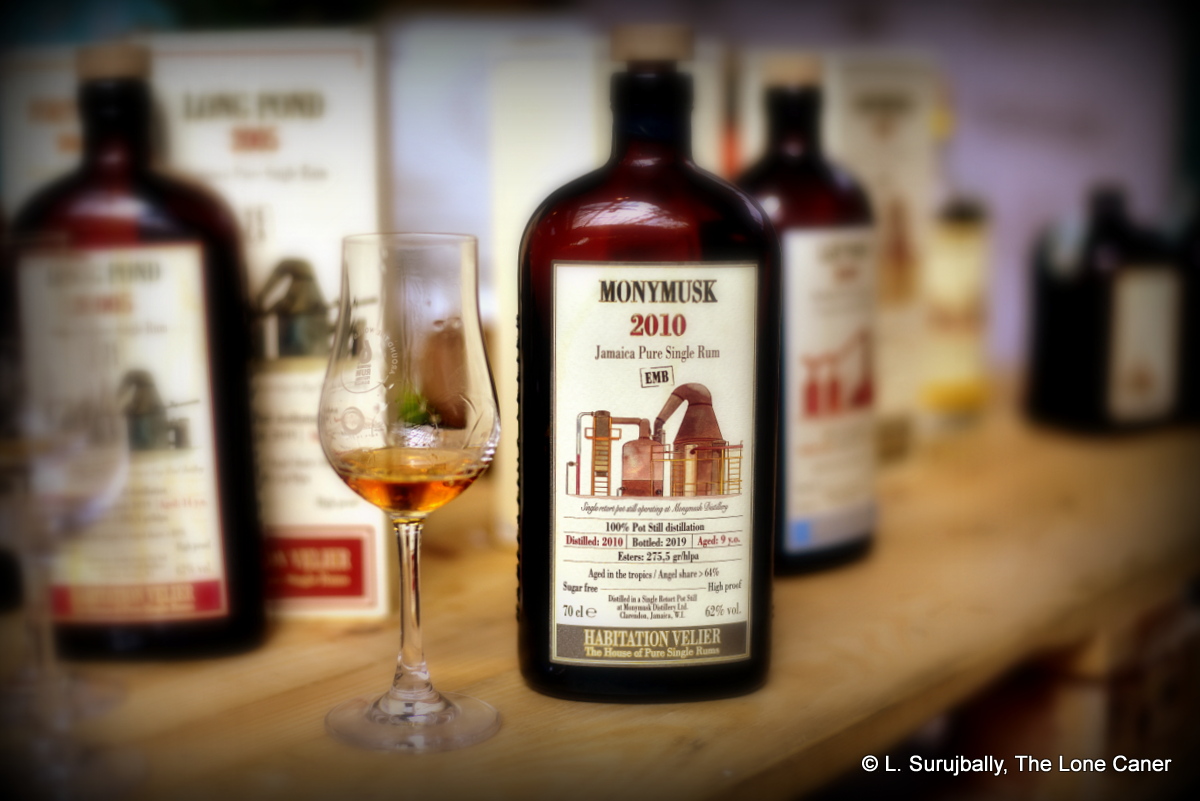

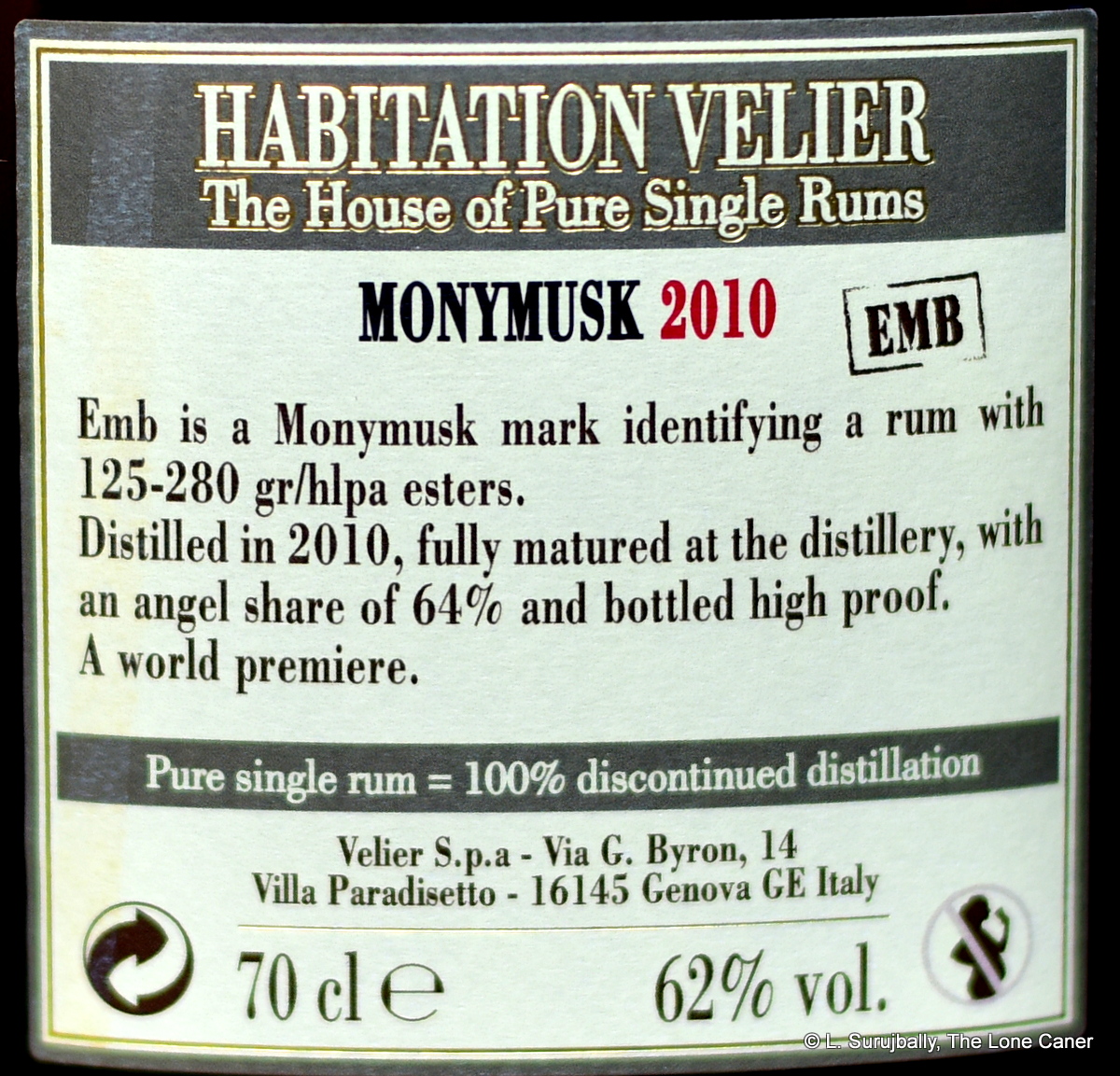 As for the finish, well, in rum terms it was longer than the current Guyanese election and seemed to feel that it was required that it run through the entire tasting experience a second time, as well as adding some light touches of acetone and rubber, citrus, brine, plus everything else we had already experienced the palate. I sighed when it was over…and poured myself another shot.
As for the finish, well, in rum terms it was longer than the current Guyanese election and seemed to feel that it was required that it run through the entire tasting experience a second time, as well as adding some light touches of acetone and rubber, citrus, brine, plus everything else we had already experienced the palate. I sighed when it was over…and poured myself another shot.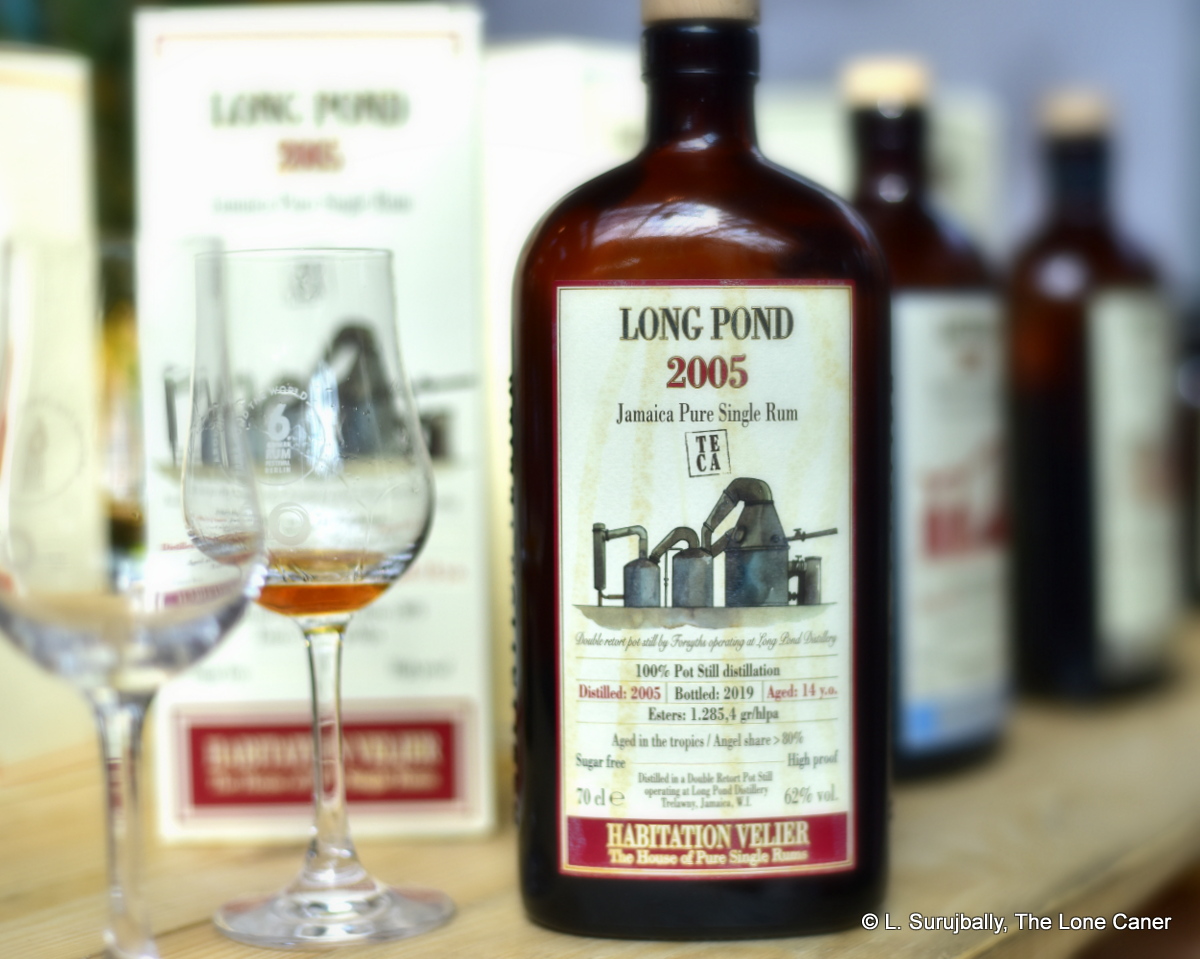
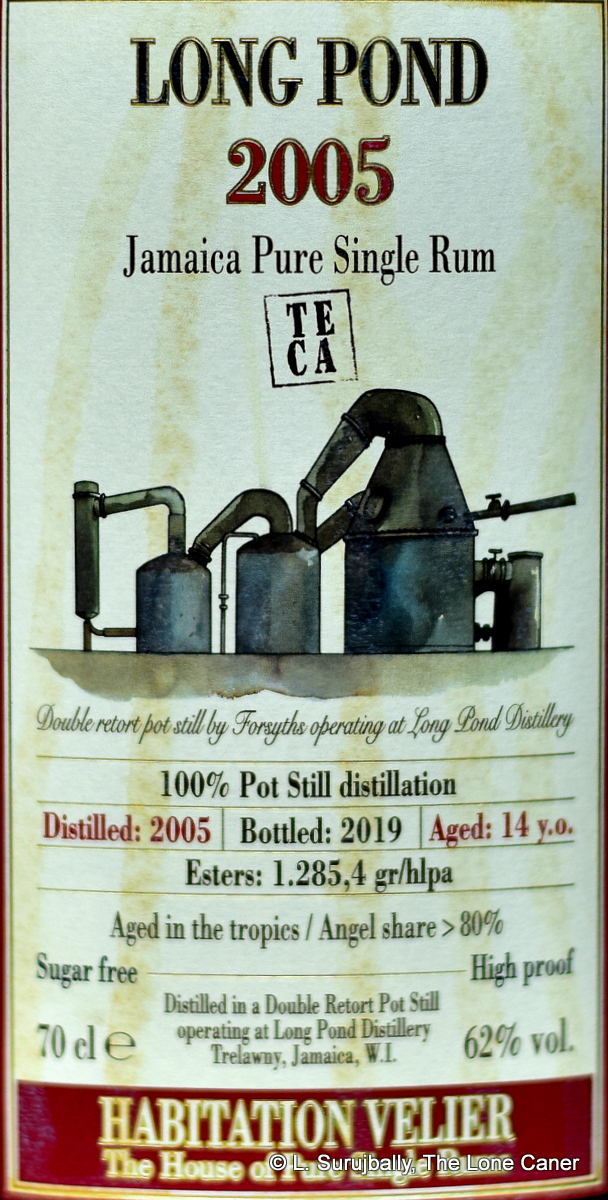 Let’s see if we can’t redress that somewhat. This is a Jamaican rum from Longpond, double pot still made, 62% ABV, 14 years old, and released as one of the pot still rums the Habitation Velier line is there to showcase. I will take it as a given it’s been completely tropically aged. Note of course, the ester figure of 1289.5 gr/hlpa, which is very close to the maximum (1600) allowed by Jamaican law. What we could expect from such a high number, then, is a rum sporting taste-chops of uncommon intensity and flavour, as rounded off by nearly a decade and a half of ageing – now, those statistics made the TECA 2018 detonate in your face and it’s arguable whether that’s a success, but here? … it worked. Swimmingly.
Let’s see if we can’t redress that somewhat. This is a Jamaican rum from Longpond, double pot still made, 62% ABV, 14 years old, and released as one of the pot still rums the Habitation Velier line is there to showcase. I will take it as a given it’s been completely tropically aged. Note of course, the ester figure of 1289.5 gr/hlpa, which is very close to the maximum (1600) allowed by Jamaican law. What we could expect from such a high number, then, is a rum sporting taste-chops of uncommon intensity and flavour, as rounded off by nearly a decade and a half of ageing – now, those statistics made the TECA 2018 detonate in your face and it’s arguable whether that’s a success, but here? … it worked. Swimmingly.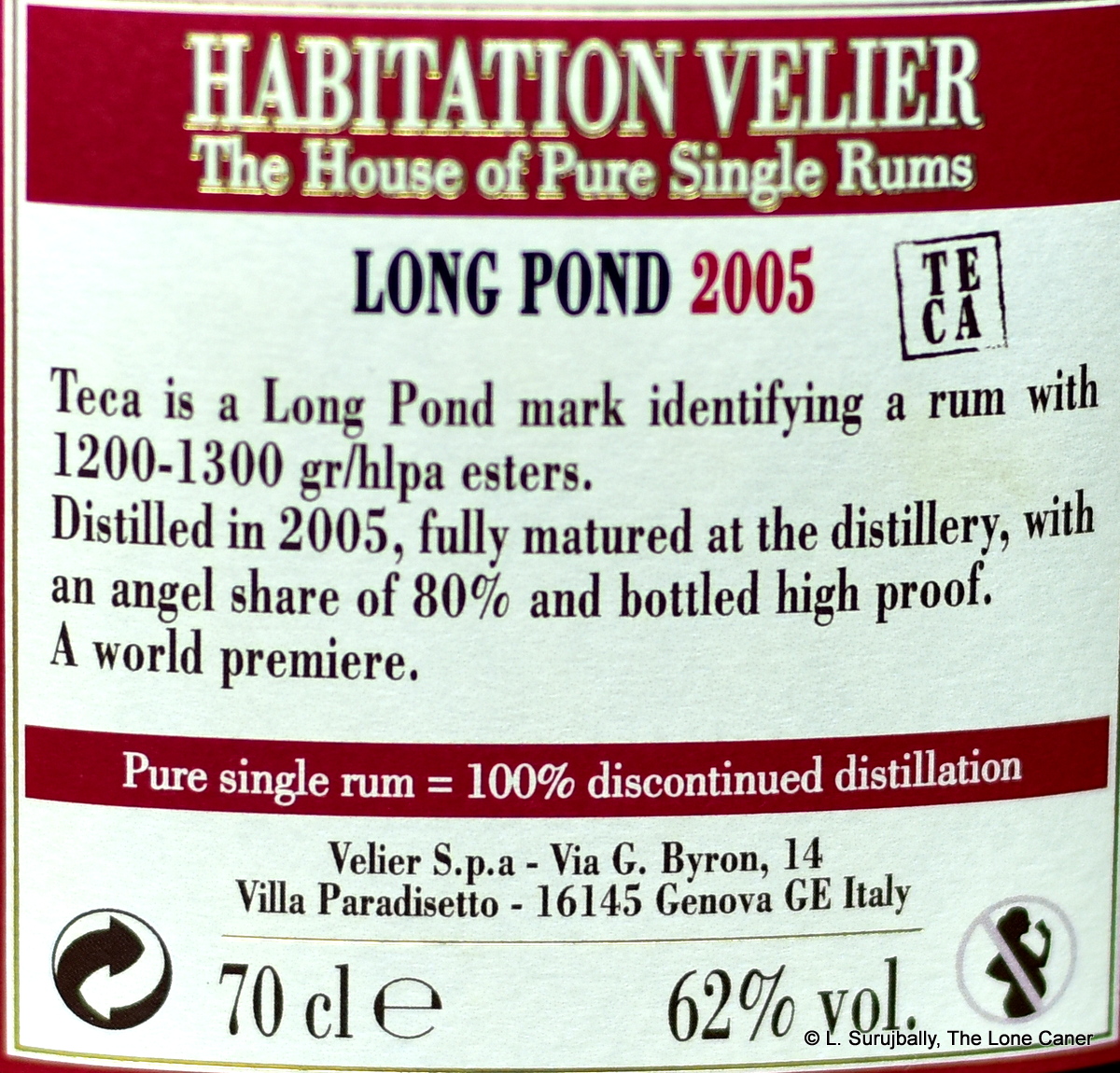 So – good or bad? Let’s see if we can sum this up. In short, I believe the 2005 TECA was a furious and outstanding rum on nearly every level. But that comes with caveats. “Fasten your seatbelt” remarked Serge Valentin
So – good or bad? Let’s see if we can sum this up. In short, I believe the 2005 TECA was a furious and outstanding rum on nearly every level. But that comes with caveats. “Fasten your seatbelt” remarked Serge Valentin  Anyone from my generation who grew up in the West Indies knows of the scalpel-sharp satirical play “Smile Orange,” written by that great Jamaican playwright, Trevor Rhone, and made into an equally funny film of the same name in 1976. It is quite literally one of the most hilarious theatre experiences of my life, though perhaps an islander might take more away from it than an expat. Why do I mention this irrelevancy? Because I was watching the YouTube video of the film that day in Berlin when I was sampling the Worthy Park series R 11.3, and though the film has not aged as well as the play, the conjoined experience brought to mind all the belly-jiggling reasons I so loved it, and Worthy Park’s rums.
Anyone from my generation who grew up in the West Indies knows of the scalpel-sharp satirical play “Smile Orange,” written by that great Jamaican playwright, Trevor Rhone, and made into an equally funny film of the same name in 1976. It is quite literally one of the most hilarious theatre experiences of my life, though perhaps an islander might take more away from it than an expat. Why do I mention this irrelevancy? Because I was watching the YouTube video of the film that day in Berlin when I was sampling the Worthy Park series R 11.3, and though the film has not aged as well as the play, the conjoined experience brought to mind all the belly-jiggling reasons I so loved it, and Worthy Park’s rums.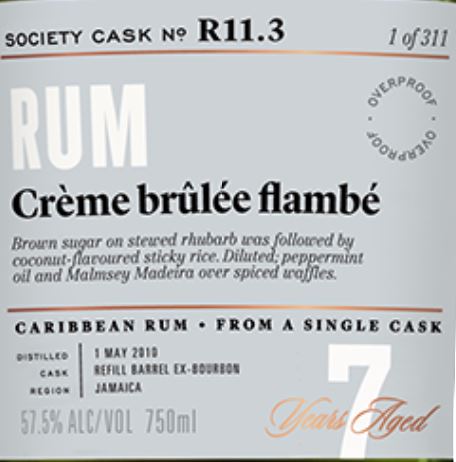 The distillation run from 2010 must have been a good year for Worthy Park, because the SMWS bought no fewer than seven separate casks from then to flesh out its R11 series of rums (R11.1 through R11.6 were distilled May 1st of that year, with R11.7 in September, and all were released in 2017). After that, I guess the Society felt its job was done for a while and pulled in its horns, releasing nothing in 2018 from WP, and only one more — R11.8 — the following year; they called it “Big and Bountiful” though it’s unclear whether this refers to Jamaican feminine pulchritude or Jamaican rums.
The distillation run from 2010 must have been a good year for Worthy Park, because the SMWS bought no fewer than seven separate casks from then to flesh out its R11 series of rums (R11.1 through R11.6 were distilled May 1st of that year, with R11.7 in September, and all were released in 2017). After that, I guess the Society felt its job was done for a while and pulled in its horns, releasing nothing in 2018 from WP, and only one more — R11.8 — the following year; they called it “Big and Bountiful” though it’s unclear whether this refers to Jamaican feminine pulchritude or Jamaican rums.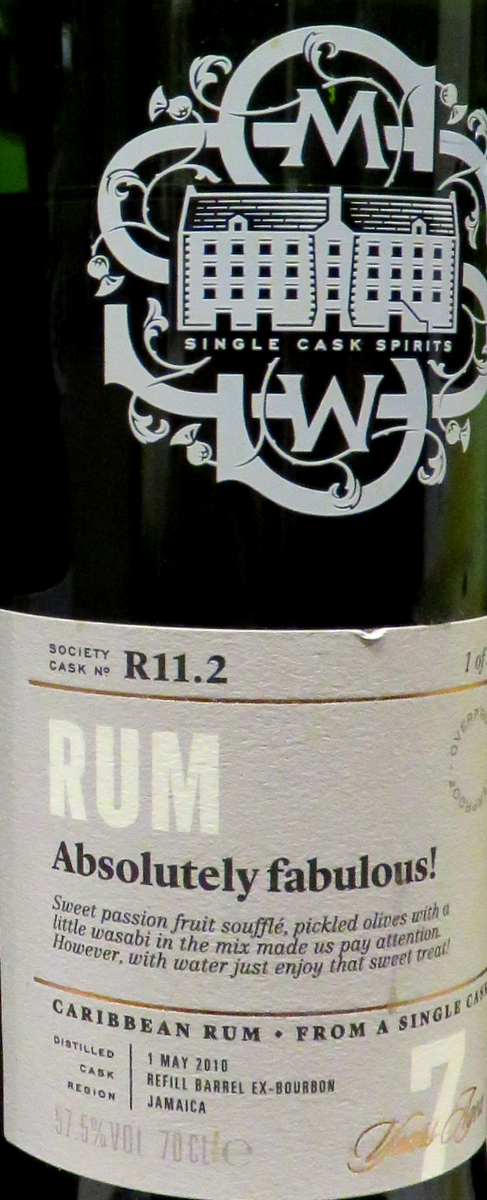 It sounds strange to say it, but the
It sounds strange to say it, but the 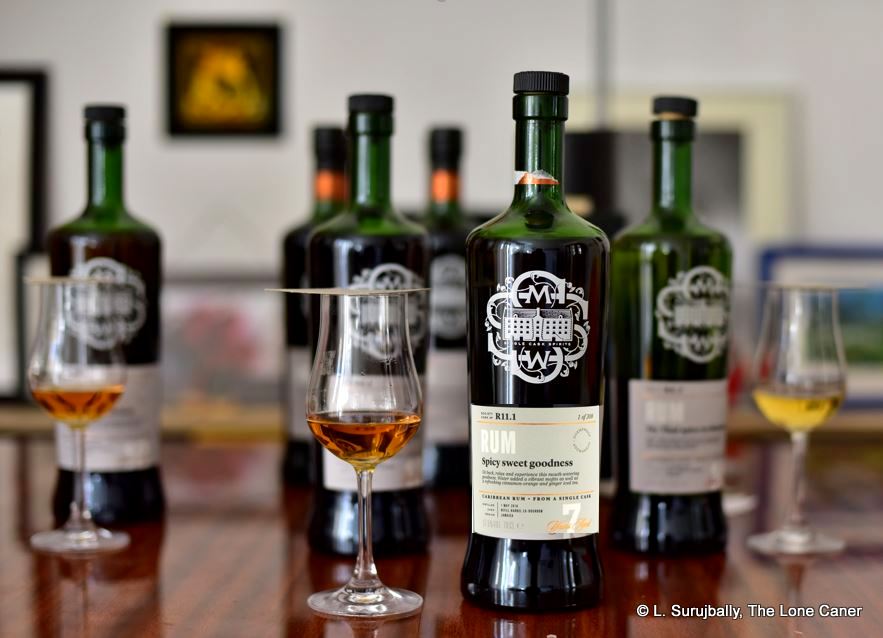
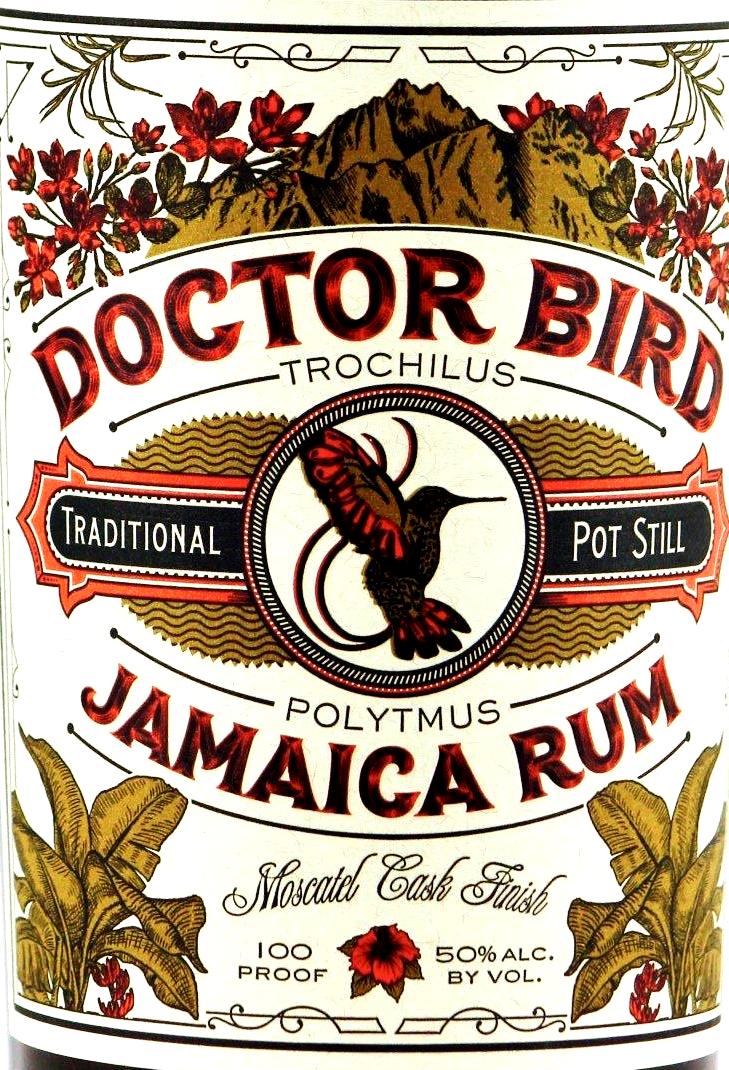 The strangely named Doctor Bird rum is another company’s response to
The strangely named Doctor Bird rum is another company’s response to 
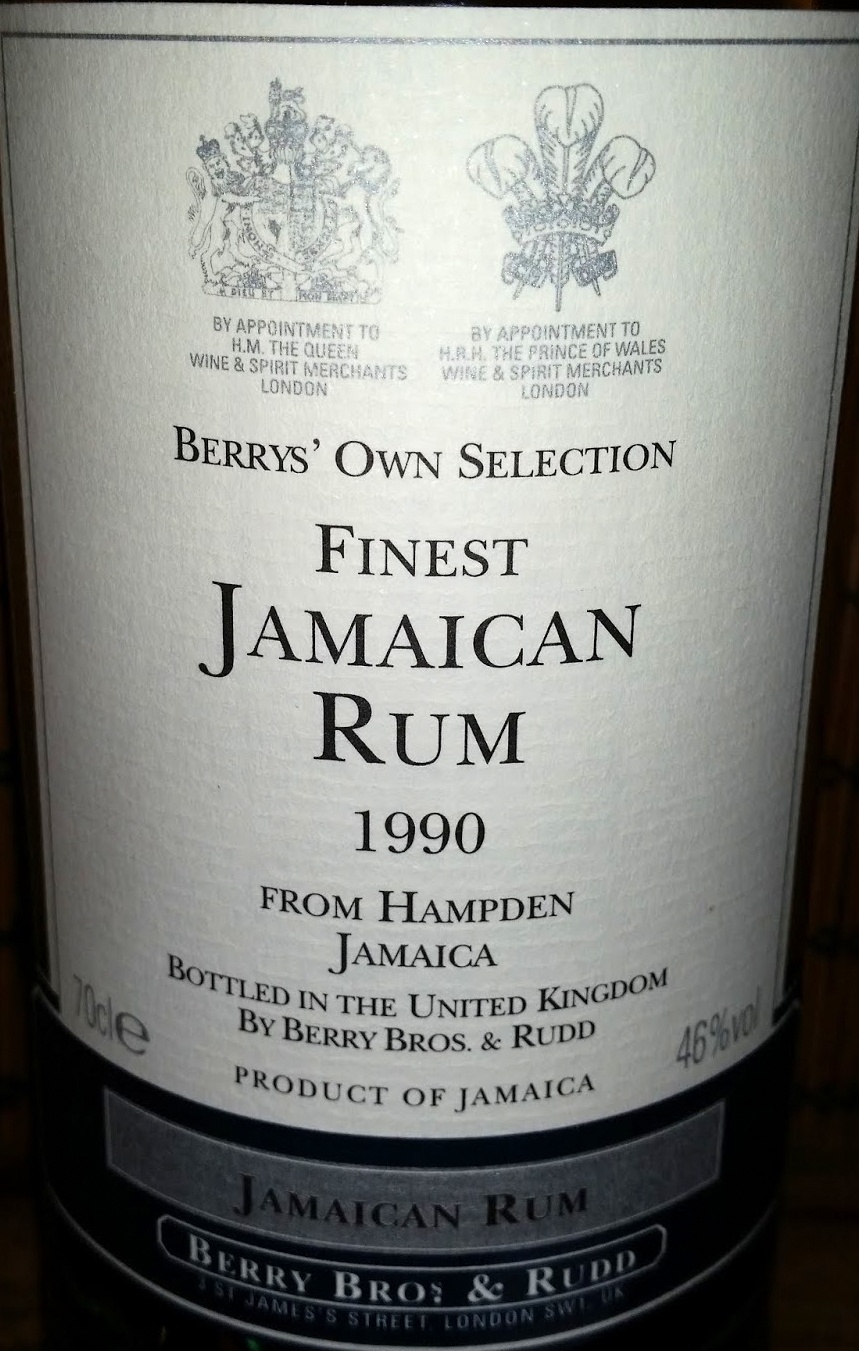
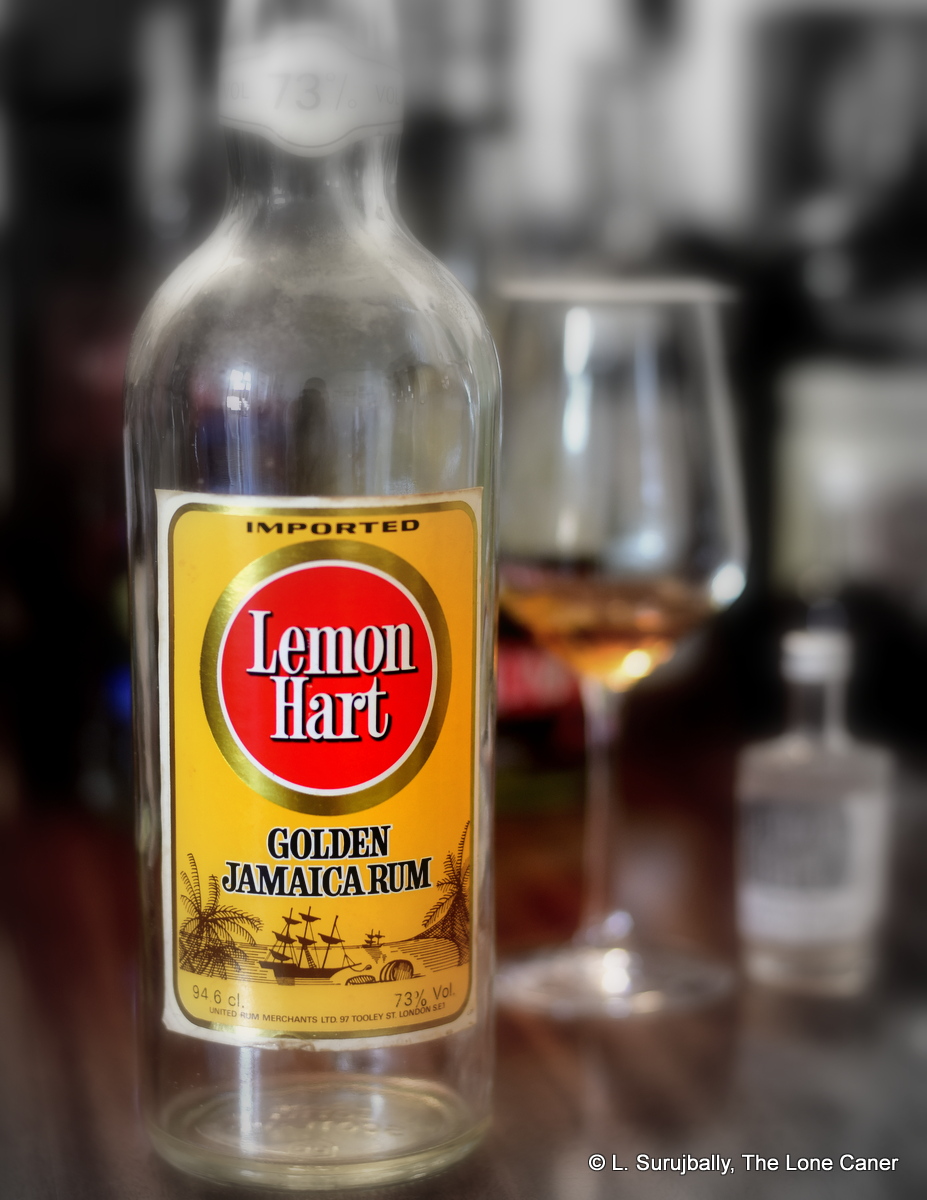 Rumaniacs Review #107 | R-0688
Rumaniacs Review #107 | R-0688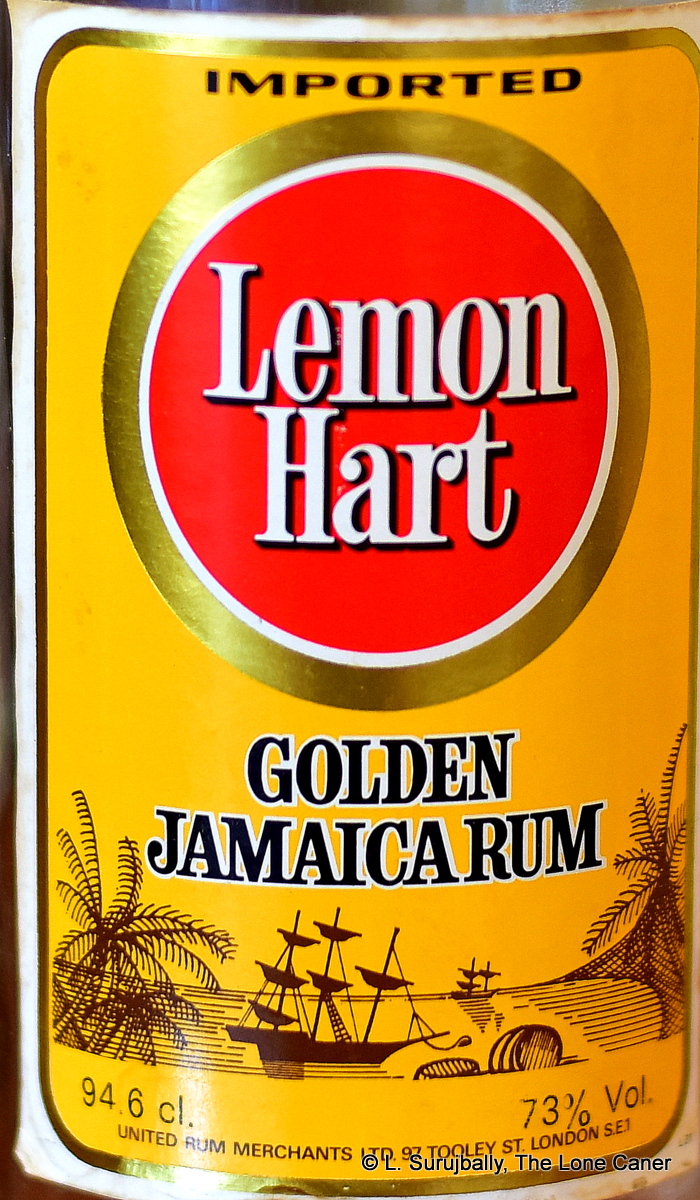 Palate – Waiting for this to open up is definitely the way to go, because with some patience, the bags of funk, soda pop, nail polish, red and yellow overripe fruits, grapes and raisins just become a taste avalanche across the tongue. It’s a very solid series of tastes, firm but not sharp unless you gulp it (not recommended) and once you get used to it, it settles down well to just providing every smidgen of taste of which it is capable.
Palate – Waiting for this to open up is definitely the way to go, because with some patience, the bags of funk, soda pop, nail polish, red and yellow overripe fruits, grapes and raisins just become a taste avalanche across the tongue. It’s a very solid series of tastes, firm but not sharp unless you gulp it (not recommended) and once you get used to it, it settles down well to just providing every smidgen of taste of which it is capable.
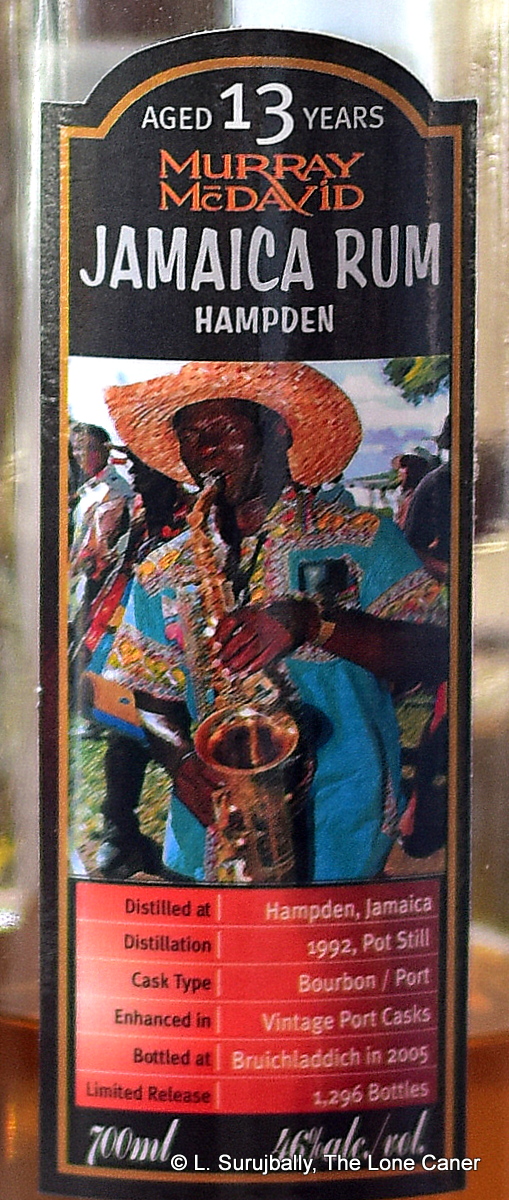 Tasting notes: definitely Jamaican, that hogo and funk was unmistakable, though it seemed more muted than the fierce cask strength Hampdens we’ve been seeing of late. It smelled initially of pencil shavings, crisp acetones, nail polish remover, a freshly painted room and glue. After opening up, I went back some minutes later and found softer aromas – red wine, molasses, honey, chocolate, and cream cheese and salted butter on fresh croissants, really yummy. And this is not to ignore the ever-present sense of fruitiness – dark grapes, black cherries, ripe mangoes, papayas, gooseberries and some bananas, just enough to round off the entire nose.
Tasting notes: definitely Jamaican, that hogo and funk was unmistakable, though it seemed more muted than the fierce cask strength Hampdens we’ve been seeing of late. It smelled initially of pencil shavings, crisp acetones, nail polish remover, a freshly painted room and glue. After opening up, I went back some minutes later and found softer aromas – red wine, molasses, honey, chocolate, and cream cheese and salted butter on fresh croissants, really yummy. And this is not to ignore the ever-present sense of fruitiness – dark grapes, black cherries, ripe mangoes, papayas, gooseberries and some bananas, just enough to round off the entire nose.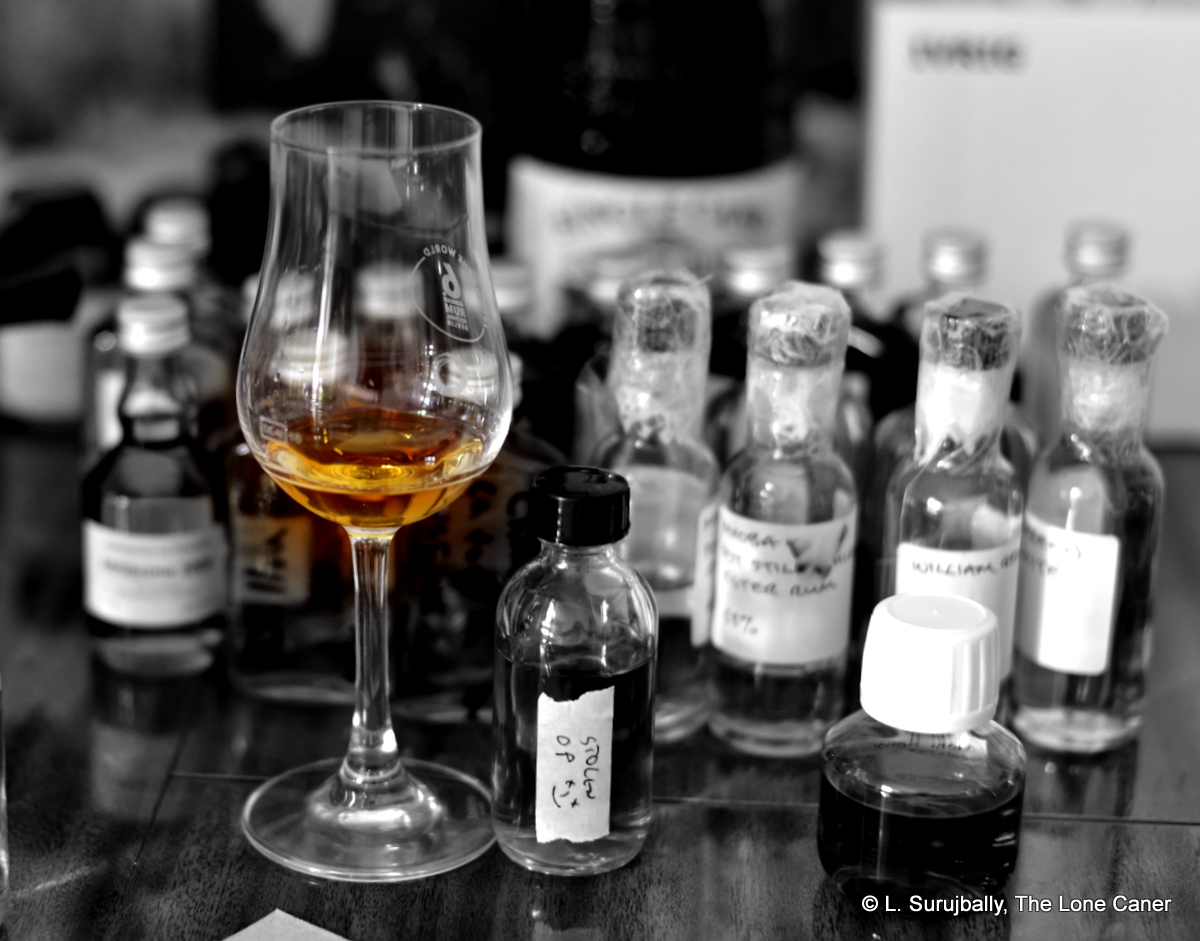
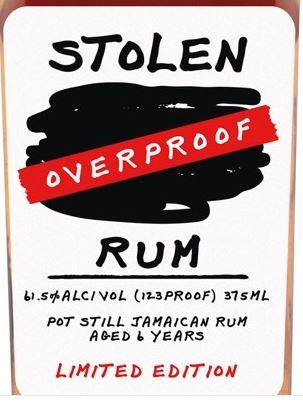
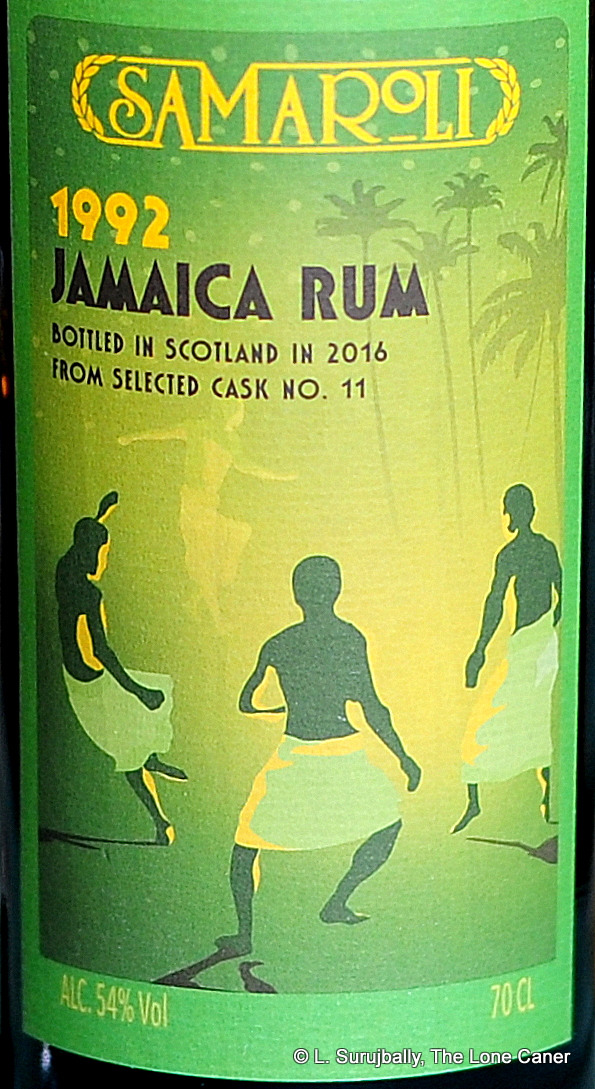 Although it’s older, Samaroli is somewhat eclipsed these days (by Velier), and is sometimes regarded as being on the same tier as, say,
Although it’s older, Samaroli is somewhat eclipsed these days (by Velier), and is sometimes regarded as being on the same tier as, say, 